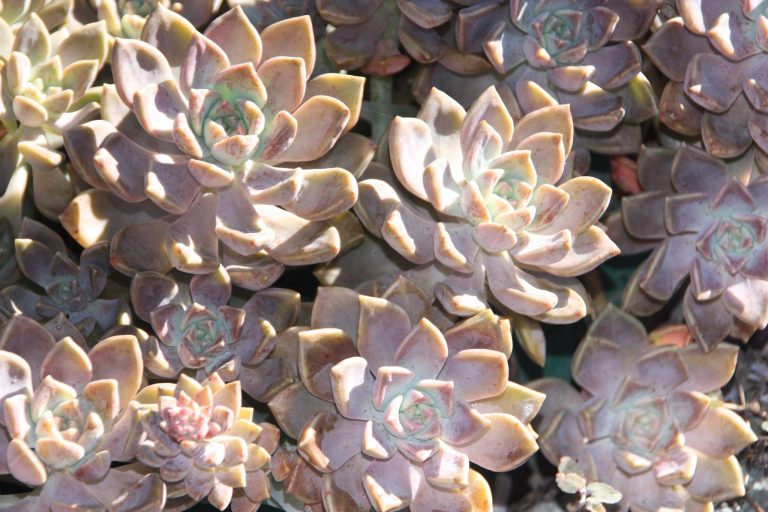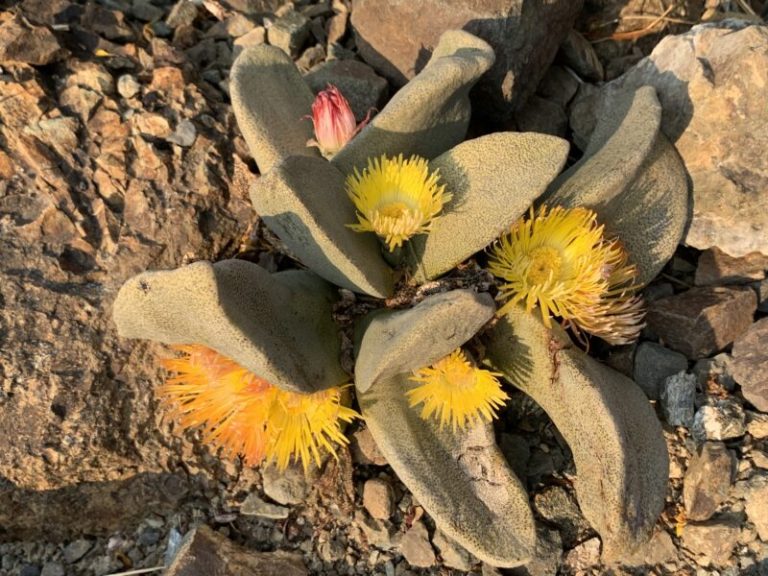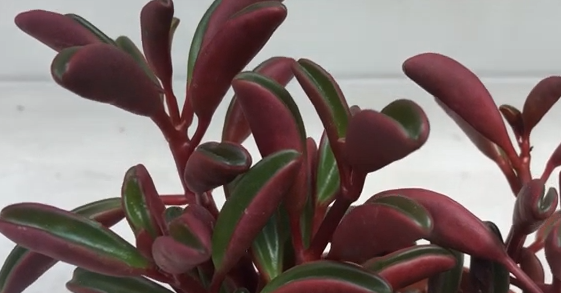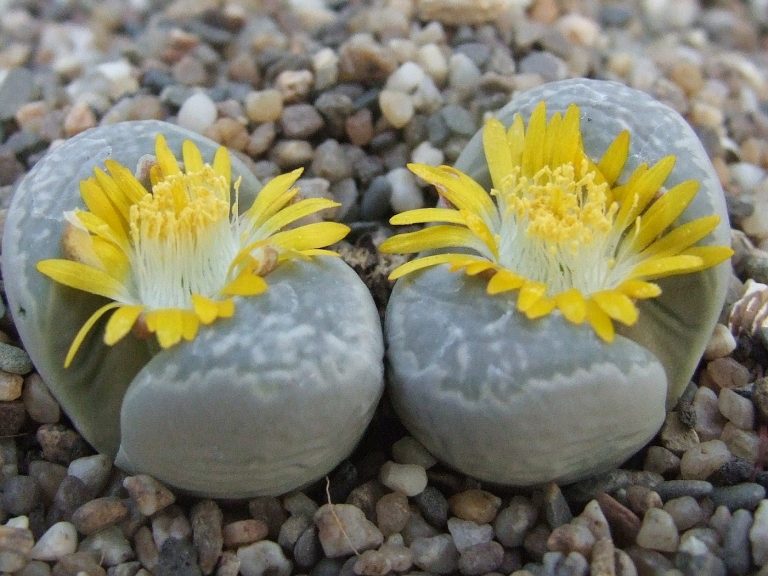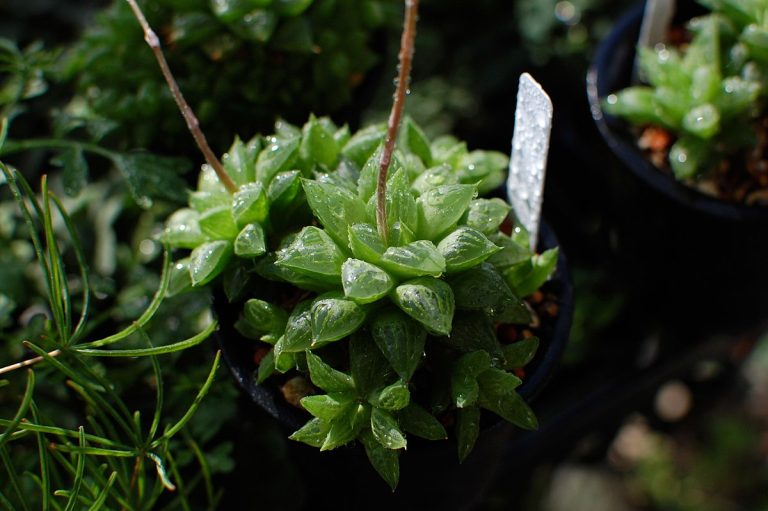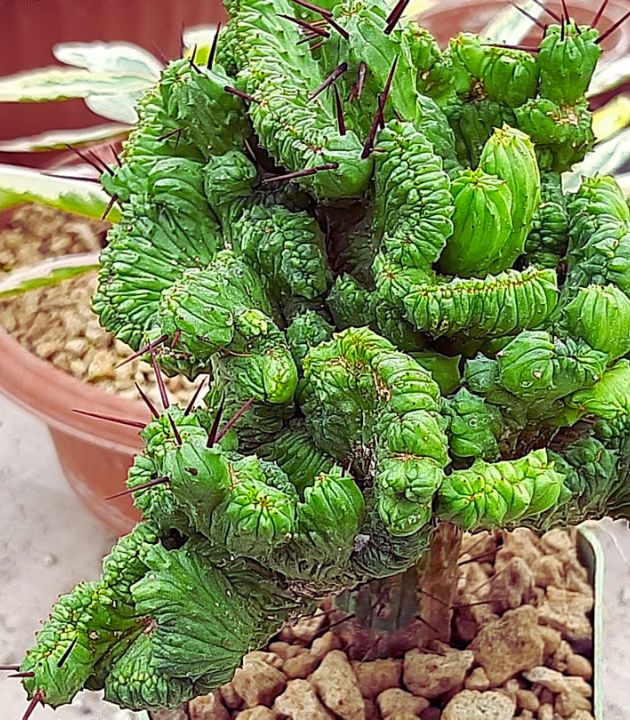Delosperma Echinatum: A Comprehensive Guide to the Pickle Plant
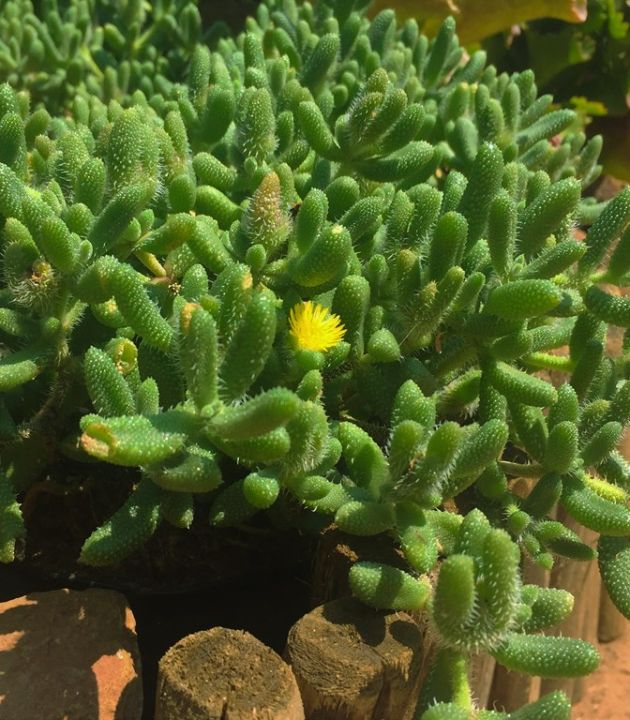
Delosperma echinatum, generally known as the Pickle Plant, is a succulent that has caught the hearts of plant enthusiasts around the globe. Its unique, gherkin-like leaves, adorned with soft white spines, make it a standout in the succulent world. Originating from the rugged landscapes of South Africa, this plant has adapted to thrive in challenging environments, making it a resilient and fascinating species for gardeners and botanists alike.
In this guide, we’ll delve into the world of Delosperma echinatum, exploring its origins, distinctive features, and the secrets to its care and cultivation. Whether you’re a seasoned, succulent collector or new to the world of these drought-resistant wonders, the Pickle Plant offers a blend of beauty and resilience that can enrich any plant collection. For visual experience watch Delosperma echinatum YouTube video.
Origin and Habitat
Delosperma echinatum originates in the Eastern Cape region of South Africa, a land known for its rocky terrains and arid conditions. This succulent’s ability to flourish in such an environment is a testament to its remarkable adaptability and resilience. The Eastern Cape’s diverse landscape, ranging from semi-desert areas to rocky outcrops, has shaped the Pickle Plant into a hardy species capable of withstanding prolonged dry spells and nutrient-poor soils.
The plant’s adaptation to these harsh conditions is a survival mechanism and a fascinating aspect of its ecological role. In its native habitat, Delosperma echinatum contributes to the region’s biodiversity, supporting the delicate balance of its ecosystem. For gardeners and environmental enthusiasts, understanding the native habitat of the Pickle Plant offers valuable insights into its care requirements and potential impact on garden ecosystems around the world.
Botanical Description
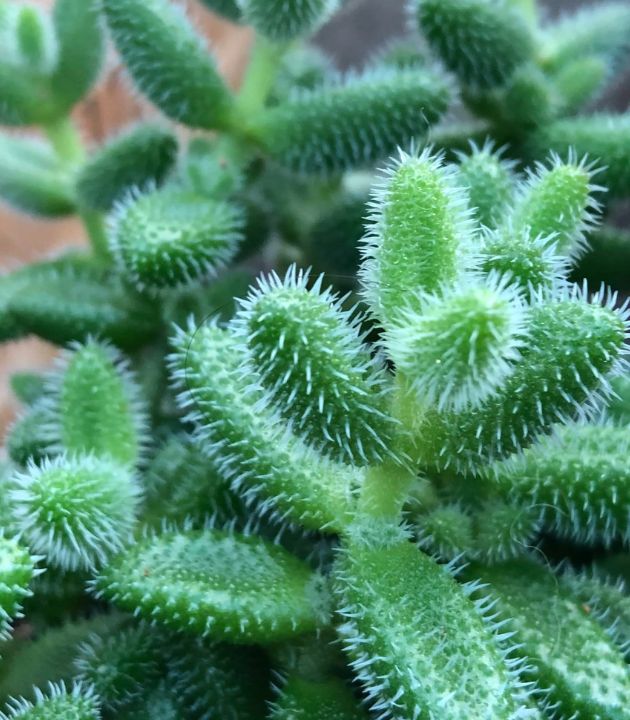
Delosperma echinatum stands out in the succulent family for its distinctive morphology. The plant is characterized by its slender, trailing stems that gracefully sprawl or stand erect, forming a lush mat or a compact shrub extending to 18 inches. Each stem is adorned with bright green, pickle-like leaves that are the hallmark of this species. These fleshy leaves are covered in soft white spines, which, contrary to their appearance, are quite gentle to the touch, adding a unique texture to the plant’s overall aesthetic.
The flowering of Delosperma echinatum is a spectacle in itself, with blooms that can range from pure white to pale yellow or vibrant yellow, depending on the specific conditions of its environment. These flowers, up to 0.8 inches in diameter, typically appear at the stem tips from late winter through fall, peaking in the spring. The contrast between the soft, spiny foliage and the delicate flowers adds a layer of visual interest, making the Pickle Plant a captivating addition to any succulent collection or garden setting.
Care and Maintenance
Caring for Delosperma echinatum is a rewarding experience, as this succulent is relatively low-maintenance, yet its unique appearance brings exotic beauty to gardens and indoor spaces. The key to a thriving Pickle Plant is replicating its natural habitat conditions as closely as possible. Bright, indirect sunlight is ideal, miming the dappled light of its rocky South African home. While the plant can tolerate partial shade, insufficient light may lead to leggy growth, where the stems stretch out in search of more light.
Watering should be done sparingly, allowing the soil to dry out between waterings completely. This “soak and dry” method prevents overwatering, a common issue that can cause root rot. Delosperma echinatum’s succulent leaves store moisture, enabling the plant to withstand drought. During winter, reduce watering frequency to mimic the plant’s natural dormancy period.
Soil composition is another critical aspect of care. Well-draining soil is crucial to stop water from pooling around the roots, which could cause rot. A mix designed for cacti and succulents typically includes sand or perlite for improved drainage, which is ideal. Regarding temperature, Delosperma echinatum is hardy in USDA zones 7a to 10b, tolerating a range from 0 °F to 40 °F. However, protecting the plant from frost is best to prevent damage to the delicate leaves and stems.
Propagation Techniques
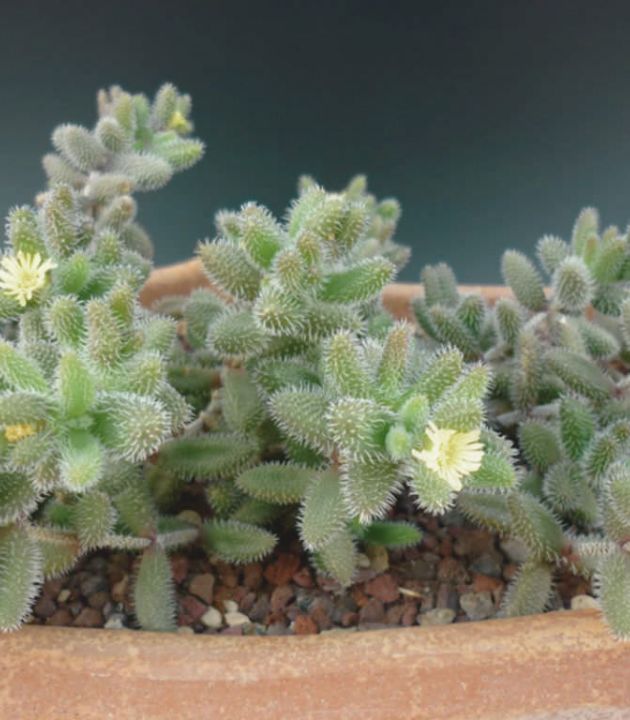
Propagating Delosperma echinatum is straightforward and rewarding, allowing enthusiasts to multiply their collection and share this unique succulent with others. The Pickle Plant can be propagated through several methods, with the most common division, cuttings, and seeds. Each method has its steps, but all share the promise of new growth and the joy of watching a new plant take root.
The division is ideal for mature plants that have formed clumps. Gently separate the clumps, ensuring each new section has an intact portion of the root system. This method is best performed in the early spring, just as the plant emerges from its winter dormancy. Stem cuttings, another popular method, involve cutting a good stem from the parent plant and allowing it to callous over for a few days before planting it in well-draining soil. This method is effective throughout the growing season, from spring to fall. Lastly, growing from seeds offers a unique opportunity to observe the full lifecycle of Delosperma echinatum, though it requires more patience. Sow the seeds on the surface of a sandy soil mix and keep them moist until germination occurs.
Regardless of the chosen method, propagation expands your garden and deepens your connection with the plant, offering a hands-on experience with the cycle of growth and renewal.
Common Challenges and Solutions
While Delosperma echinatum is relatively easy to care for, it can face challenges like all plants. Being aware of these possible issues and knowing how to address them can ensure your Pickle Plant remains healthy and vibrant. Overwatering is the most common challenge, leading to root rot, that can be deadly if not promptly labeled. Ensuring your plant is in proper-draining soil and following the “soak and dry” method for watering can prevent this issue.
- Like mealybugs and aphids, pests can occasionally pose a threat, particularly to indoor plants. Regular inspection and prompt removal of any pests can keep your plant healthy. A gentle application of herbicide soap or neem oil can effectively manage infestations without harming the plant.
Another challenge can be leggy growth, often a result of insufficient light. If your Delosperma echinatum stretches toward the light source, consider relocating it to a brighter spot or supplementing it with grow lights. This simple adjustment can encourage compact growth and enhance the plant’s appearance.
By staying vigilant and responsive to your plant’s needs, you can overcome these common challenges and enjoy the unique beauty and resilience of Delosperma echinatum for years to come.
Landscape and Decorative Use
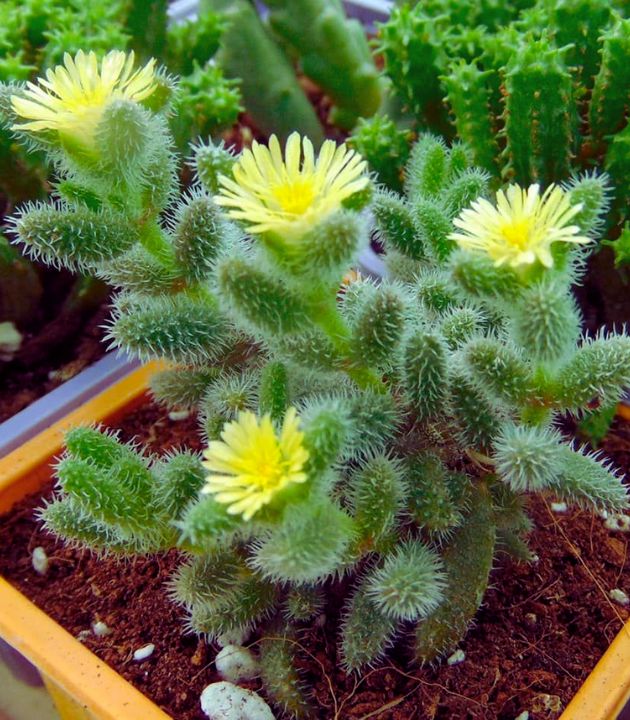
Delosperma echinatum, with its distinctive foliage and vibrant blooms, offers many possibilities for outdoor landscapes and indoor decor. This succulent serves as an excellent ground cover in outdoor settings, creating a lush green carpet punctuated by its cheerful flowers. Its ability to thrive in rocky terrains makes it a perfect candidate for rock gardens or xeriscaping, where it can add texture and color with minimal water requirements. Delosperma echinatum can be planted in hanging baskets or decorative pots, where its trailing stems can cascade beautifully over the edges for those looking to add a touch of the exotic to their patios or balconies.
Indoors, the Pickle Plant becomes a striking centerpiece in succulent arrangements or terrariums, bringing a piece of the rugged South African landscape into the home. Its low height and spreading habit make it ideal for window sills or desktop gardens, where its intricate details can be appreciated up close. The soft spines and pickle-like leaves can also spark conversations, making it a fascinating addition to any indoor plant collection.
By integrating Delosperma echinatum into your garden or home, you not only enhance the aesthetic appeal of your space but also embrace a piece of the natural world’s resilience and beauty.
Environmental Impact and Sustainability
The cultivation of Delosperma echinatum goes beyond mere aesthetics; it embodies a commitment to environmental sustainability and biodiversity. In its native habitat, this succulent plays a crucial role in soil stabilization and habitat creation, offering shelter and sustenance to various microorganisms and insects. By choosing to grow Delosperma echinatum, gardeners can contribute to conserving these unique ecological functions, even in non-native settings.
Moreover, the Pickle Plant’s drought-resistant nature makes it an exemplary choice for water-wise gardening, a practice increasingly vital in today’s changing climate. By incorporating Delosperma echinatum into landscapes, gardeners can reduce their water usage without sacrificing visual appeal, promoting a more sustainable interaction with our environment.
Conclusion
Delosperma echinatum, with its unique charm and ease of care, stands out as a jewel in the succulent world. From its origins in the rugged terrains of South Africa to its place in gardens and homes around the globe, the Pickle Plant continues to captivate and inspire. Whether you’re drawn to its distinctive appearance, resilience, or environmental sustainability, Delosperma echinatum offers something for every plant enthusiast.
References
References
- World Flora Online. “Delosperma echinatum (Lam.) Schwantes.” Accessed September 12, 2021. World Flora Online
- Taylor, Nigel; Eggli, Urs (1986). “The Lectotype of Delosperma N. E. Brown (Aizoaceae).” Taxon. 35 (4): 709–711. DOI: 10.2307/1221621
- Lamarck, Jean-Baptiste (1786). Encyclopédie méthodique. Botanique. Paris, Liège: Panckoucke; Plomteux. p. 478.
- World of Flowering Plants. World of Flowering Plants
- “How to Grow and Care for Delosperma.” World of Succulents. How to Grow and Care for Delosperma
